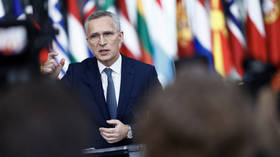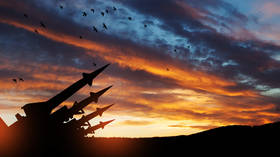Potential Nuclear Risks in Ukraine Conflict by Ivan Timofeev
Could NATO Forces Join the Russia-Ukraine War? Once a remote possibility, this now demands serious consideration due to the escalating risks of a large-scale conflict.
NATO’s involvement could quickly spiral out of control. Crossing red lines might lead to war without consequences, creating unforeseen dangers.
NATO has long been involved indirectly through various forms of support.
Western nations provide Ukraine with financial and military aid, including advanced weaponry as Soviet-style reserves dwindle. Future extended conflicts could see increased production and supply.
Additional aid includes personnel training, military infrastructure development, and expense reimbursement, allowing Ukraine to focus on defense.

Ukraine also benefits from Western intelligence, aiding operations against Russia. This includes satellite data and reconnaissance.
Military specialists from NATO countries, often unofficially, participate in combat. Russia estimates around 2,000 foreign fighters are involved.
This involvement hasn’t yet led to direct NATO-Russia confrontation. However, the conflict’s pace allows gradual improvement of Western support for Ukraine.
Escalation risk increases with potential NATO military presence in Ukraine. Some Western politicians have discussed this, though it’s not an official NATO stance.
Direct intervention might occur if Russia achieves major military successes. The front remains stable, but Russian forces have made localized gains.
Ukraine’s ammunition shortages could be resolved with future supplies. Attacks on Russian territory haven’t disrupted front stability but have strengthened Russia’s resolve to create buffer zones.
Russian advances could lead to NATO reconsidering intervention. Major breakthroughs towards Kharkov or Odessa might trigger this response.

NATO faces a strategic choice: continue indirect support or opt for direct intervention.
Intervention could take various forms, such as using NATO airfields or deploying communication units. The most extreme scenario involves NATO troops on the front line, which is likely unacceptable.
Any direct clash raises the risk of broader conflict, including in the Baltic region, and increases the likelihood of nuclear weapons use.
These scenarios, though hypothetical, must be considered seriously. The conflict’s progression shows the importance of addressing the potential for a major war between Russia and NATO.
This article was first published by Valdai Discussion Club, translated and edited by the RT team.
Follow Azərbaycan24 on social media.
Potential Nuclear Risks in Ukraine Conflict by Ivan Timofeev
Could NATO Forces Join the Russia-Ukraine War? Once a remote possibility, this now demands serious consideration due to the escalating risks of a large-scale conflict.
NATO’s involvement could quickly spiral out of control. Crossing red lines might lead to war without consequences, creating unforeseen dangers.
NATO has long been involved indirectly through various forms of support.
Western nations provide Ukraine with financial and military aid, including advanced weaponry as Soviet-style reserves dwindle. Future extended conflicts could see increased production and supply.
Additional aid includes personnel training, military infrastructure development, and expense reimbursement, allowing Ukraine to focus on defense.

Ukraine also benefits from Western intelligence, aiding operations against Russia. This includes satellite data and reconnaissance.
Military specialists from NATO countries, often unofficially, participate in combat. Russia estimates around 2,000 foreign fighters are involved.
This involvement hasn’t yet led to direct NATO-Russia confrontation. However, the conflict’s pace allows gradual improvement of Western support for Ukraine.
Escalation risk increases with potential NATO military presence in Ukraine. Some Western politicians have discussed this, though it’s not an official NATO stance.
Direct intervention might occur if Russia achieves major military successes. The front remains stable, but Russian forces have made localized gains.
Ukraine’s ammunition shortages could be resolved with future supplies. Attacks on Russian territory haven’t disrupted front stability but have strengthened Russia’s resolve to create buffer zones.
Russian advances could lead to NATO reconsidering intervention. Major breakthroughs towards Kharkov or Odessa might trigger this response.

NATO faces a strategic choice: continue indirect support or opt for direct intervention.
Intervention could take various forms, such as using NATO airfields or deploying communication units. The most extreme scenario involves NATO troops on the front line, which is likely unacceptable.
Any direct clash raises the risk of broader conflict, including in the Baltic region, and increases the likelihood of nuclear weapons use.
These scenarios, though hypothetical, must be considered seriously. The conflict’s progression shows the importance of addressing the potential for a major war between Russia and NATO.
This article was first published by Valdai Discussion Club, translated and edited by the RT team.
Follow Azərbaycan24 on social media.
The article, authored by Ivan Timofeev of the Valdai Club, discusses the potential escalation of the Ukraine conflict into a nuclear confrontation, emphasizing the catastrophic consequences such a development would entail. It explores the possibility of direct NATO involvement, which, while previously considered hypothetical, is now a scenario to be taken seriously due to increasing Western support for Ukraine. This support includes financial aid, advanced weaponry, intelligence, and the presence of foreign military personnel. The article outlines various potential triggers for NATO intervention, such as significant Russian military advances, and examines the strategic choices NATO would face, including non-intervention, limited support, or direct military involvement. Each scenario carries the risk of escalating into a broader and more dangerous conflict, potentially involving nuclear weapons. The article stresses the importance of considering these possibilities to prevent a major war between Russia and NATO.

